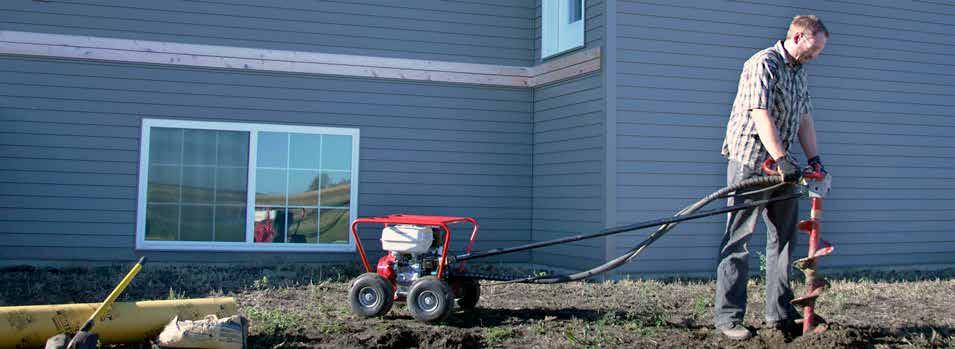
2 minute read
The Key to the Perfect Deck: A Quick Guide to Deck Footings
Nothing says summer like a backyard barbeque on a new deck. When built correctly, a deck can be a hot spot for backyard escapes and a refuge for enjoying perfect summer evenings, but according to Joe Haynes, Little Beaver president, it can all come crashing down if the deck doesn’t have proper footings.
“Footings support the deck’s weight at different points in the ground, creating a crucial support network that prevents sagging and wood rot,” says Haynes. “Those problems not only make the deck unattractive, but unsafe as well. Without proper footings, the deck will sink into the ground, taking with it any future summer get-togethers.”
Haynes offers some guidelines to ensure this doesn’t happen with your deck project:
Laying the Groundwork
When starting a new deck project, choosing the correct footings boils down to two things: loads and codes. The first step is to determine the deck’s size, location and layout. After getting a general idea of what the deck will look like, think about how it will be used. Will it be the next venue for the neighborhood block party? Or will it be for intimate gatherings of family and friends? Based on the answer, the deck will have different footing requirements to support the weight.
Local building codes also determine the footing style and measurements. Building codes can vary from state to state, so it’s crucial to contact local government experts. They can provide information regarding the minimum number of footings needed, spacing requirements and even how deep to dig. For instance, holes need to be dug below the frost line, which can range anywhere between 12-60 inches, depending on where the project is located.
The Digging Commences
After securing the necessary building permits from city hall and locating underground utility lines, it’s time to dig. When it comes to bringing heavy duty equipment through a yard, some machines can leave ruts in soft, green grass, and fences and narrow side yards limit what type of equipment can even reach the worksite — commonly forcing contractors to seek out hand augers and mechanical drills.
Mechanical earth drills are highly maneuverable and can get to the worksite and also save time when digging deck footings. These earth augers can cut through different soil types, dig clean, consistent holes and quickly set up the beginnings for the perfect deck. Earth drills are compact digging deck footings. and offer multiple types of digging teeth depending on the soil type.
Additionally, mechanical drills are more portable than heavy machinery. For instance, some drills feature pneumatic wheels so a single person can pull the drill and carriage to the footing location without forming lawn ruts or dismantling fences. Some manufacturers build models with torque tubes that transfer digging torque to the engine carriage, which allows one person to safely operate the drill. Once in place, the user can drill to the required depth and quickly move to the next footing location.

After the footings are placed and the concrete has set, the footings are ready for deck construction. The crew can continue building the frame for the deck that will be the hot spot next summer and for many more to come.
Little Beaver has been proudly manufacturing quality, safe and productive drilling equipment for three generations, offering a full line of easy-to-operate equipment and accessories. Learn more at www.littlebeaver. com.










